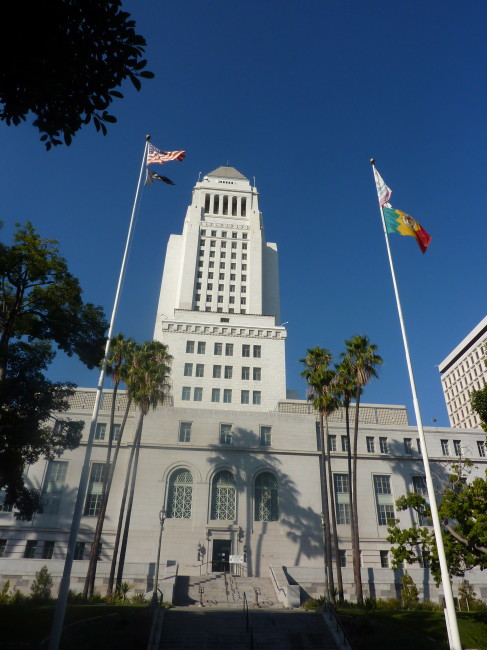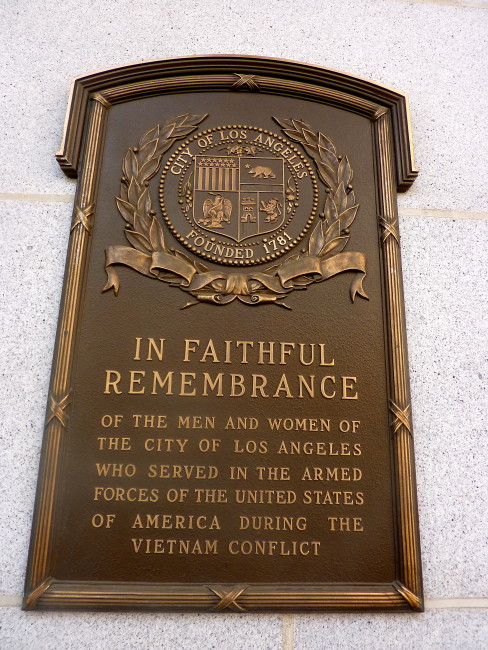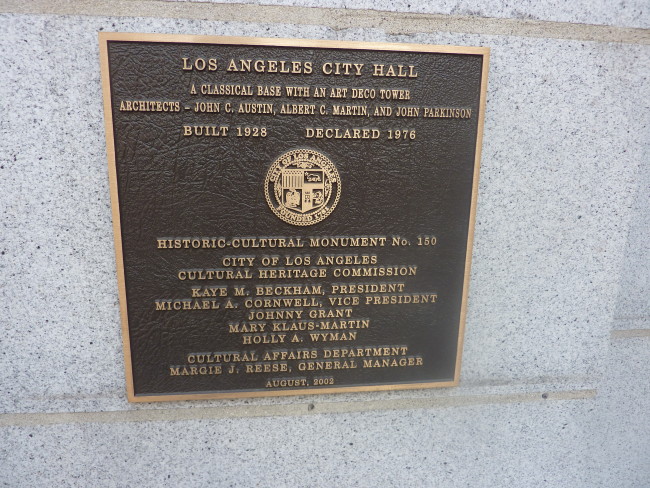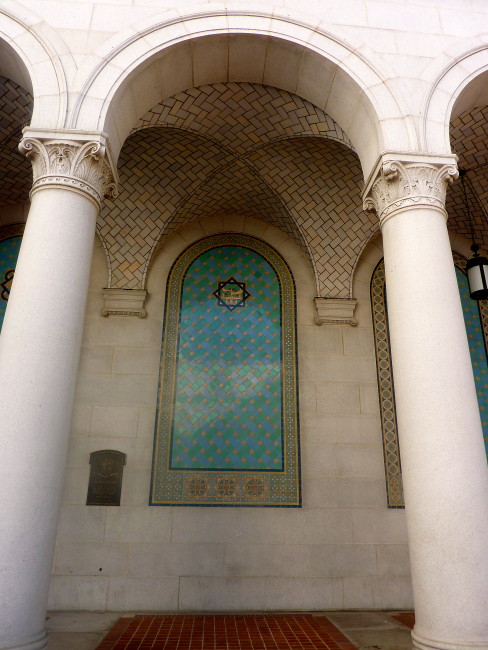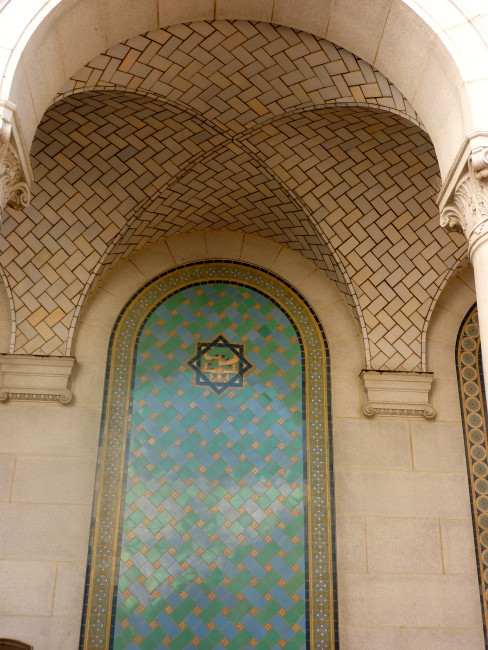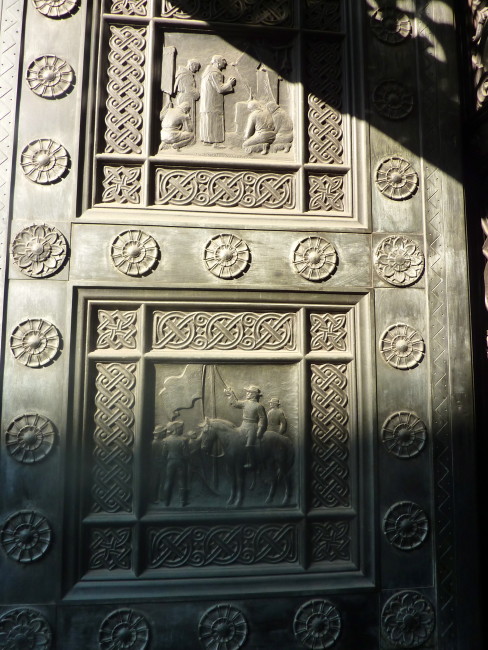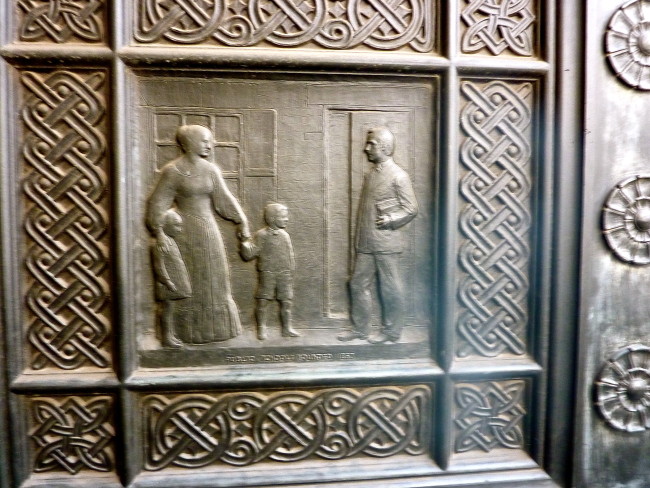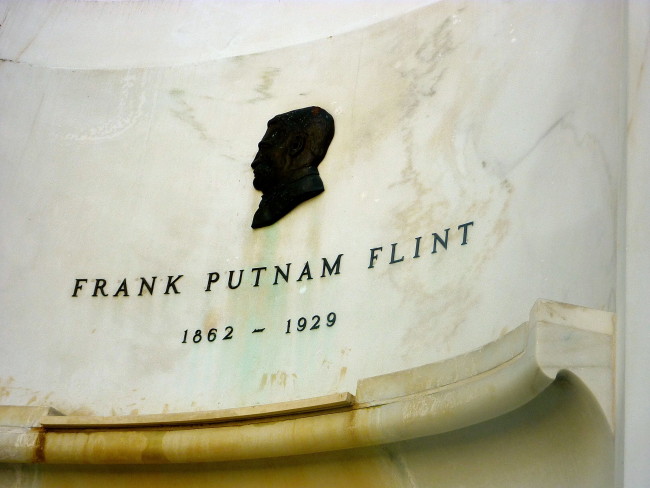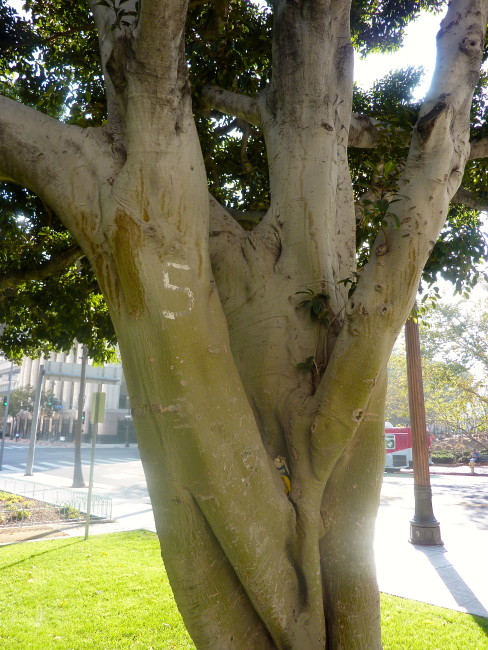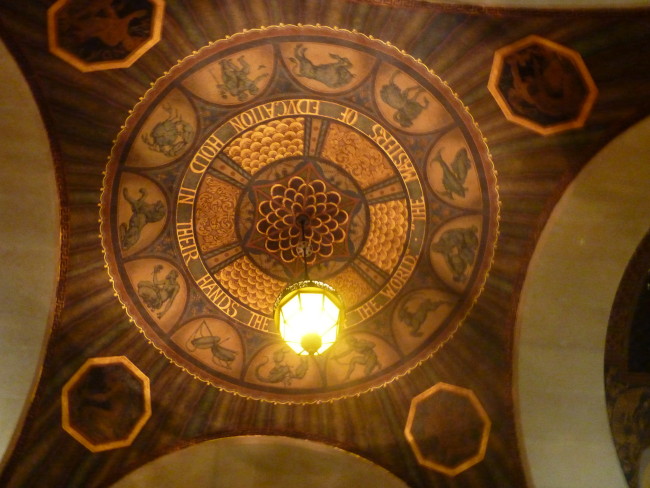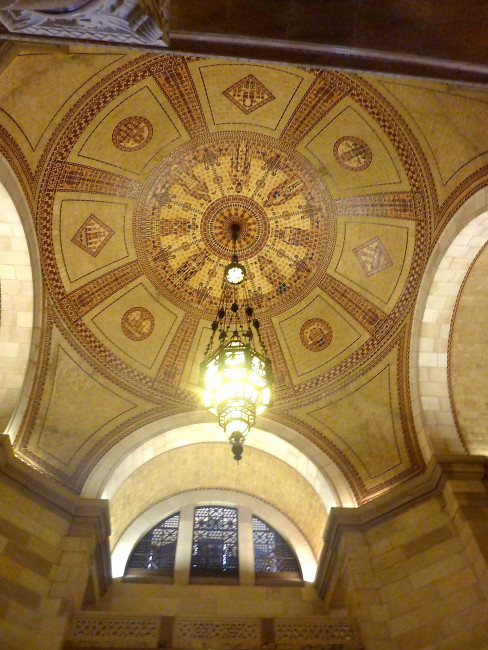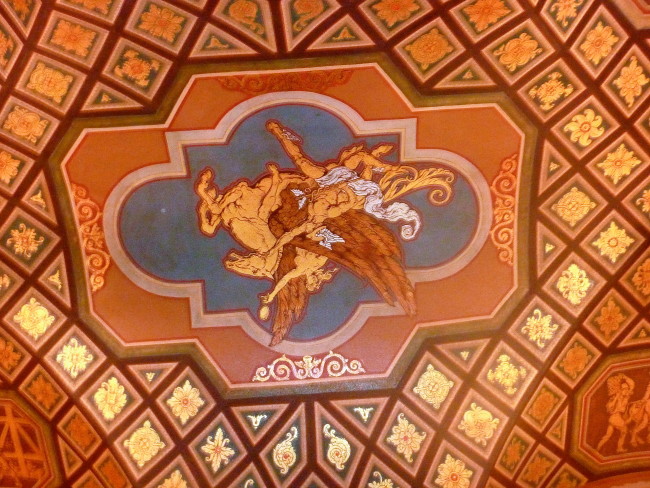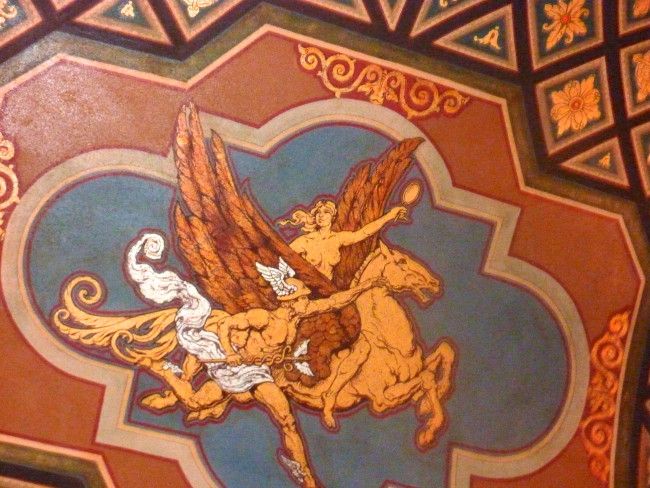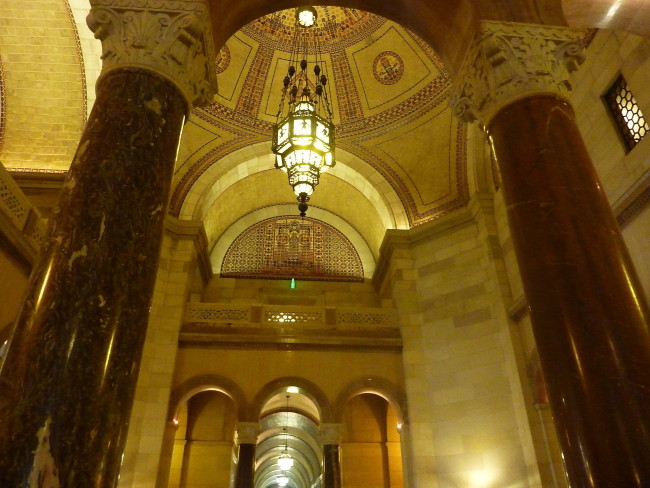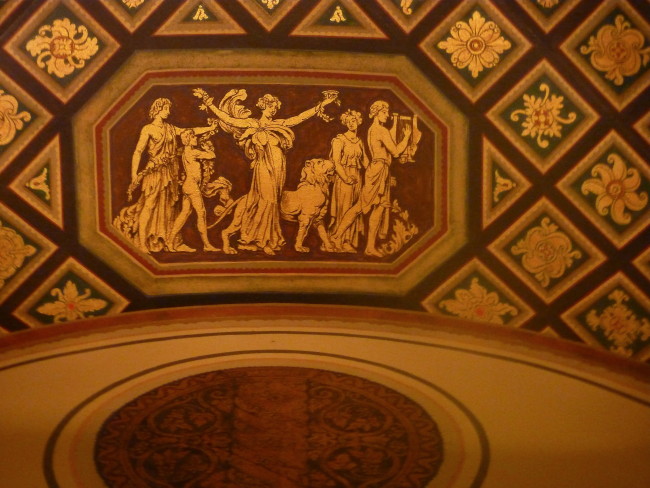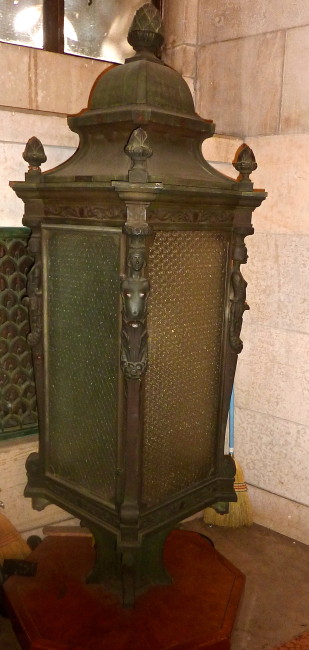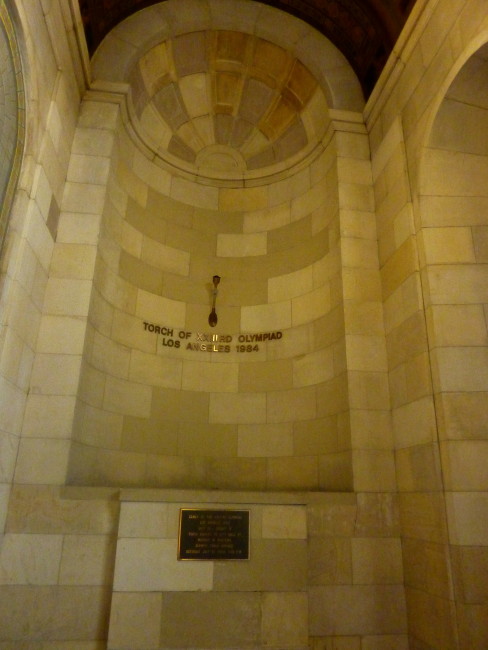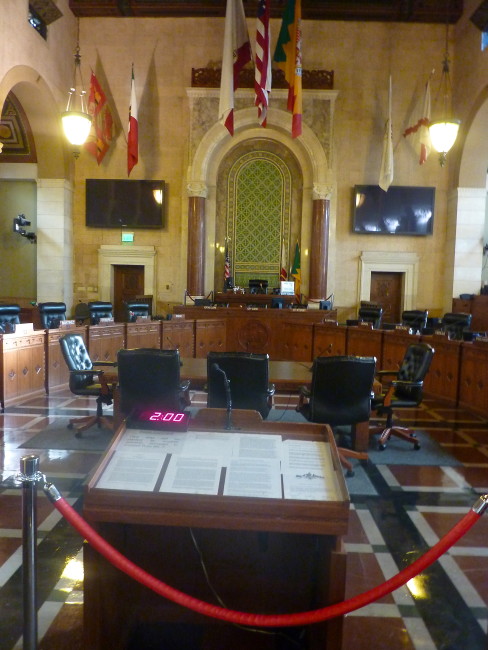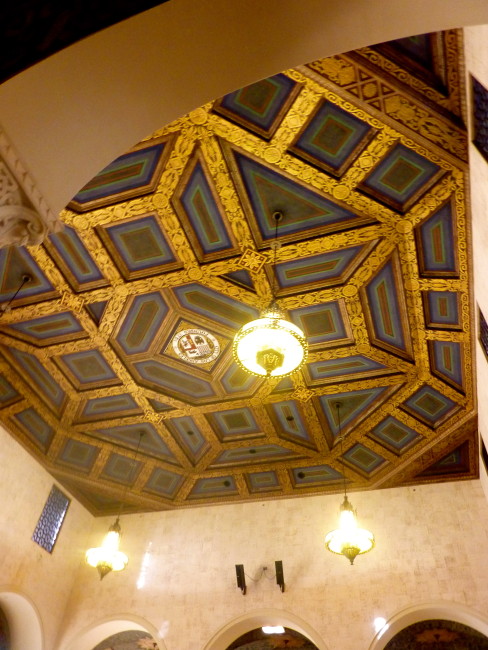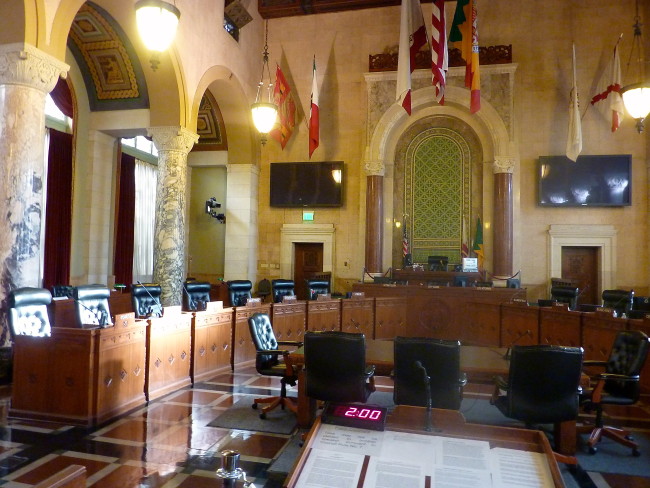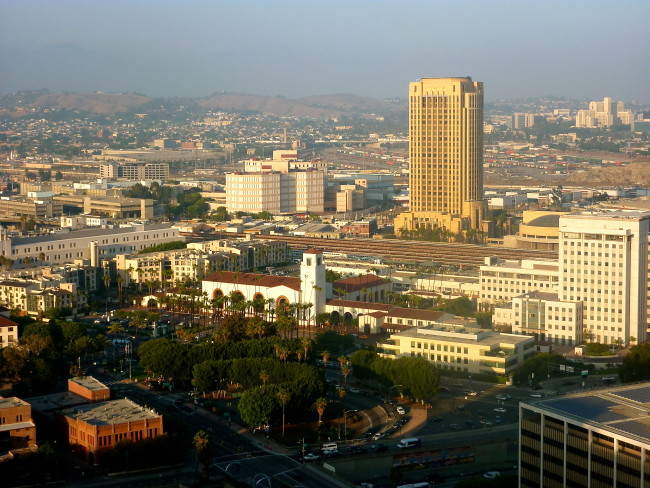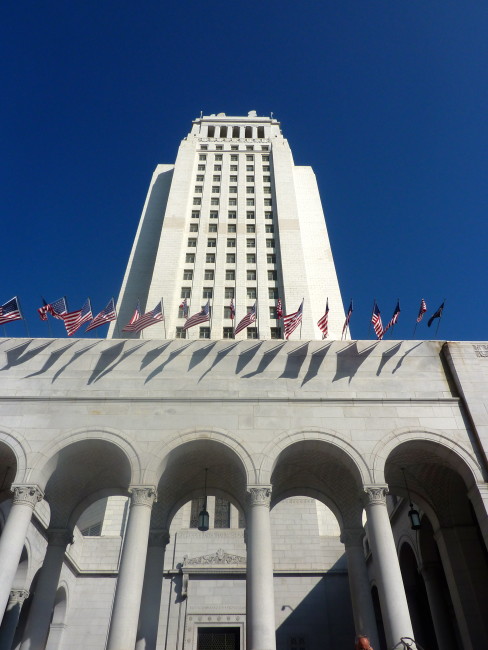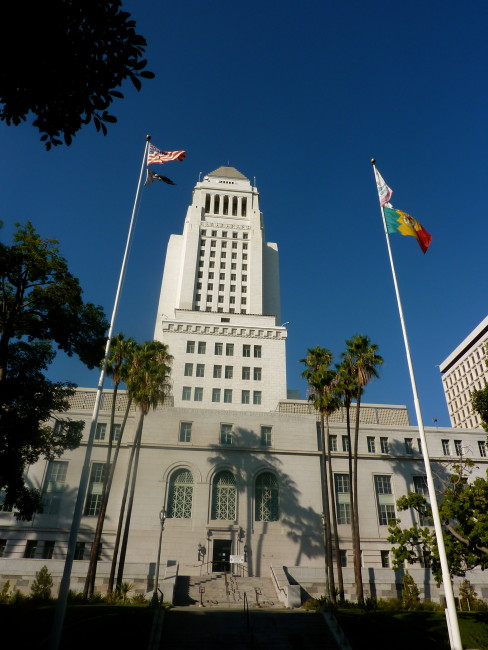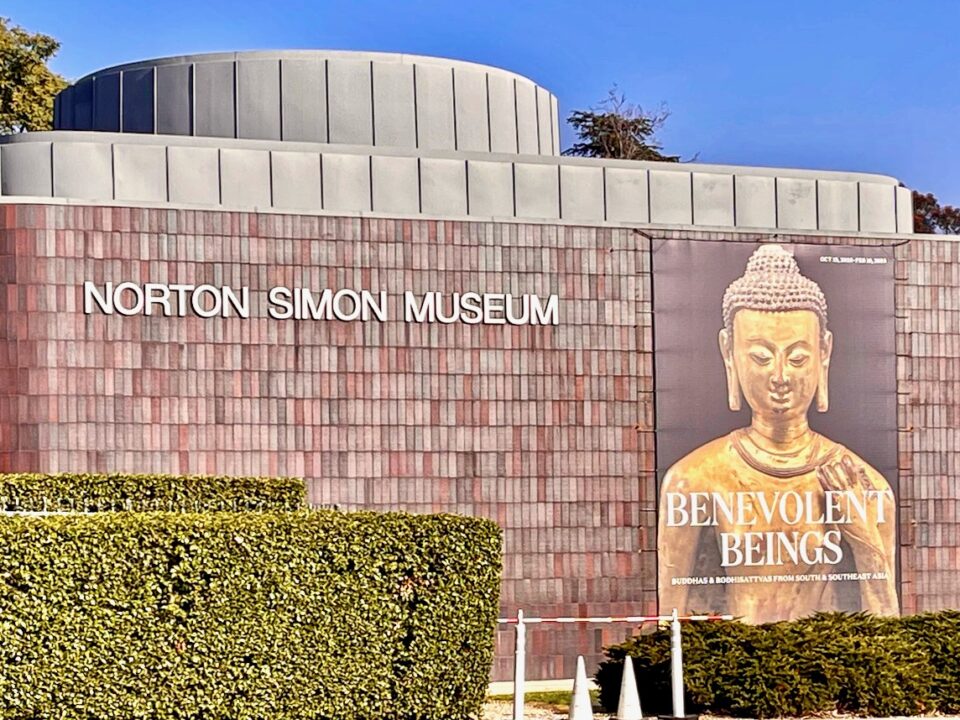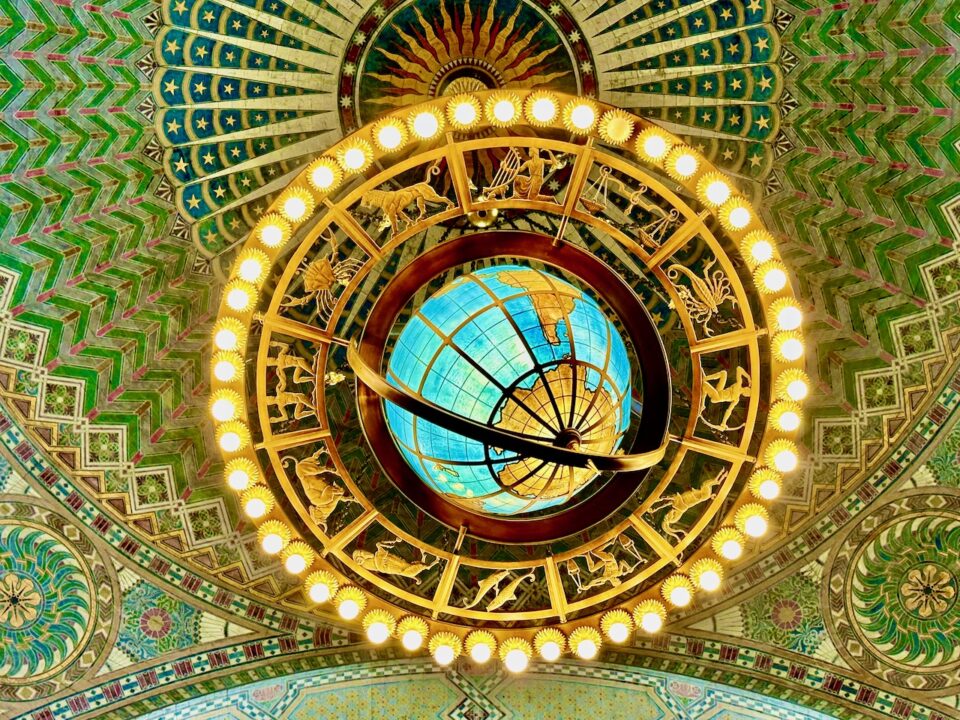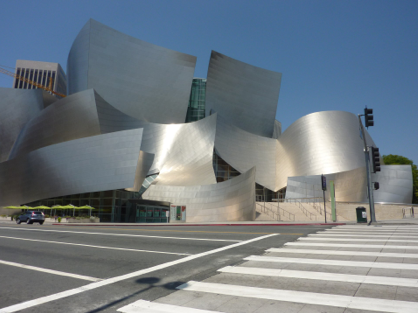
Walt Disney Concert Hall – Los Angeles
August 17, 2013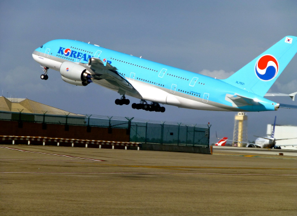
Flight Path Learning Center & Museum – Los Angeles
August 19, 2013Don’t Fight City Hall…Visit It!
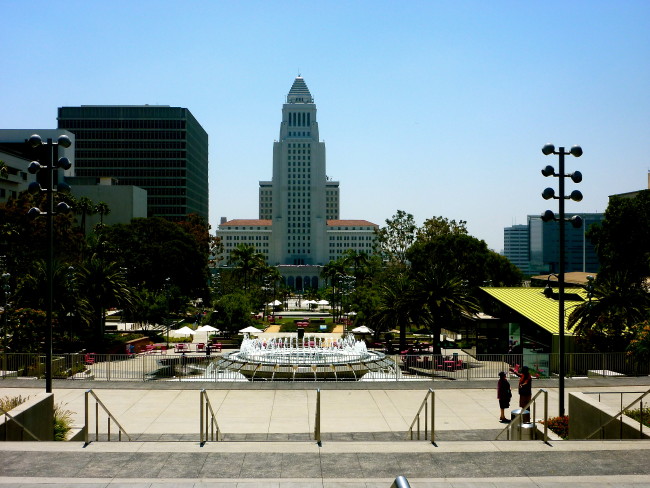 Los Angeles City Hall – Los Angeles
Los Angeles City Hall – Los Angeles
If there’s one building in the City Of Angels that stands out from all the others, it is definitely Los Angeles City Hall. From the old Superman (Daily Planet building) and Dragnet (“This is the city…Los Angeles, California…”) television shows of the 1950s and 1960s to numerous other film endeavors, Los Angeles City Hall has often been the backdrop that has been used by film makers to help this building become one of the most recognizable in the United States.
Ground was broken March 4, 1926, on the project. George Cryer was the mayor at that time, making him, I guess, the “town Cryer.”
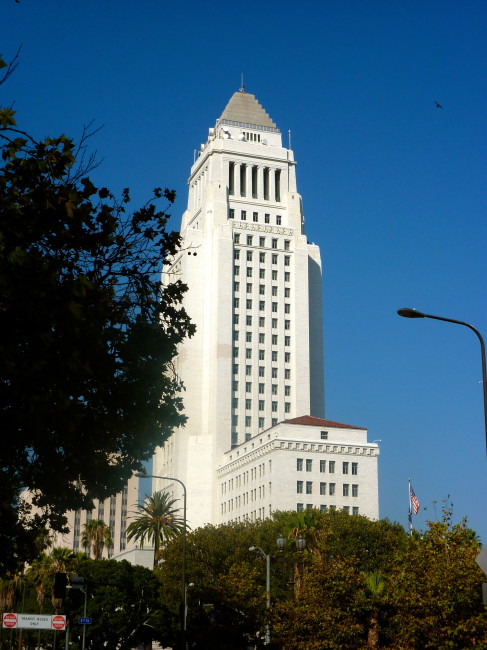 During Cryer’s administration, large public works projects were launched, including the construction of City Hall, the Central Library and the Los Angeles Memorial Coliseum among others.
During Cryer’s administration, large public works projects were launched, including the construction of City Hall, the Central Library and the Los Angeles Memorial Coliseum among others.
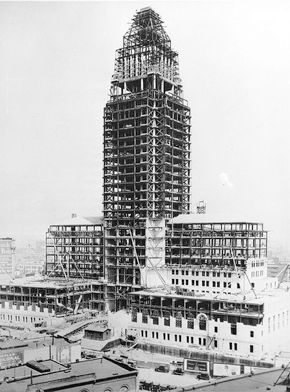
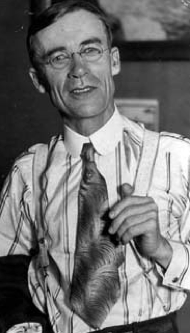
Los Angeles City Hall was officially dedicated on April 26, 1928. It was a three-day celebration presided over by Sid Grauman (Grauman’s Chinese Theater). There were Civil War veterans, 34 bands, hundreds of floats, a caged (fortunately for those in attendance) lion and Irving Berlin doing a bit of singing (below).
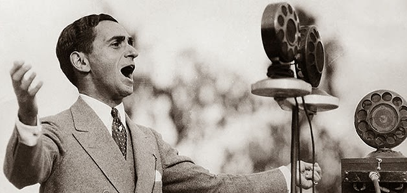
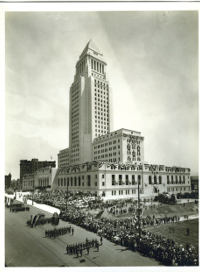
Celebratory aerial bombs blew out several windows in the new building. City Hall was the only building allowed to break the 13-story height limit by the city until 1957 (something about earthquakes in this part of the world, I guess). It was the tallest building in Los Angeles from 1928 until 1964. City Hall’s design was largely taken from the Nebraska State Capitol building. It is crowned by a penthouse that’s modeled on the Mausoleum at Halicarnassus (an ancient Greek city at the site of modern Bodrum in Turkey…yes, I had to look that up).
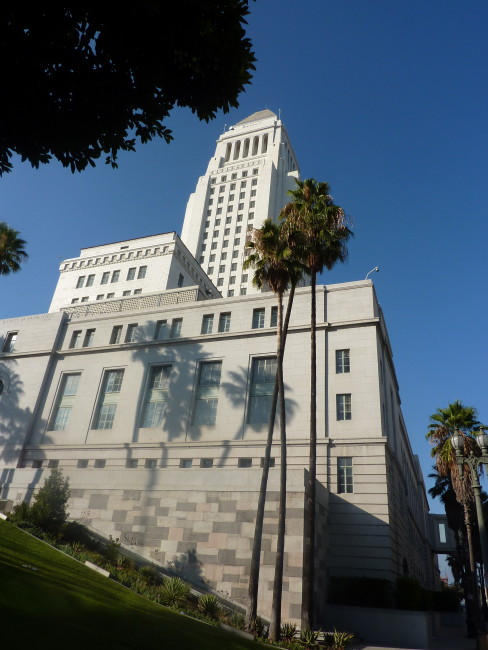
One afternoon, thanks to the folks at the Los Angeles Conservancy, which institutes a number of walking tours around town, I was able to go on a special tour to visit the interior of City Hall.
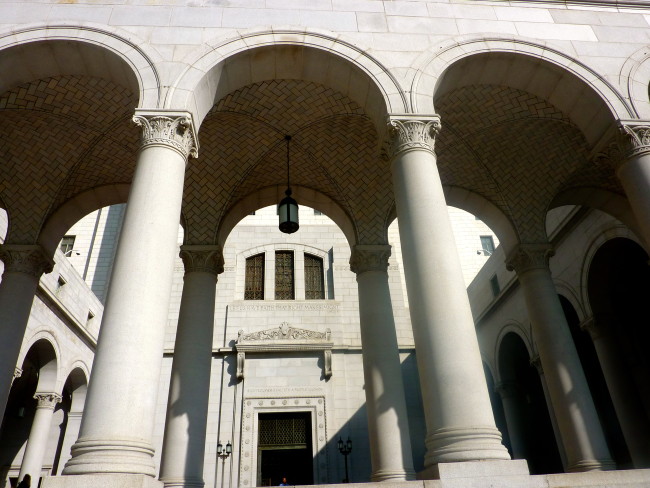 Walking up the granite steps from Spring Street, you will enter a Romanesque courtyard. The bricks were handmade and placed by hand.
Walking up the granite steps from Spring Street, you will enter a Romanesque courtyard. The bricks were handmade and placed by hand.
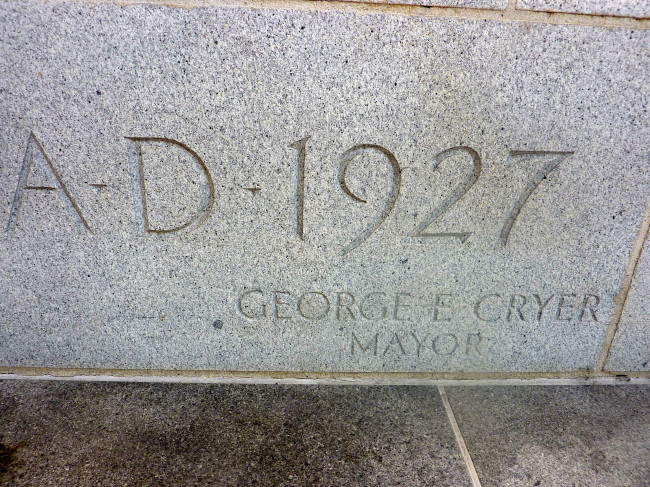 To the left of the main doors is the cornerstone ceremonially laid by the Grand Officers of the Native Sons of the Golden West on June 22 1927.
To the left of the main doors is the cornerstone ceremonially laid by the Grand Officers of the Native Sons of the Golden West on June 22 1927.
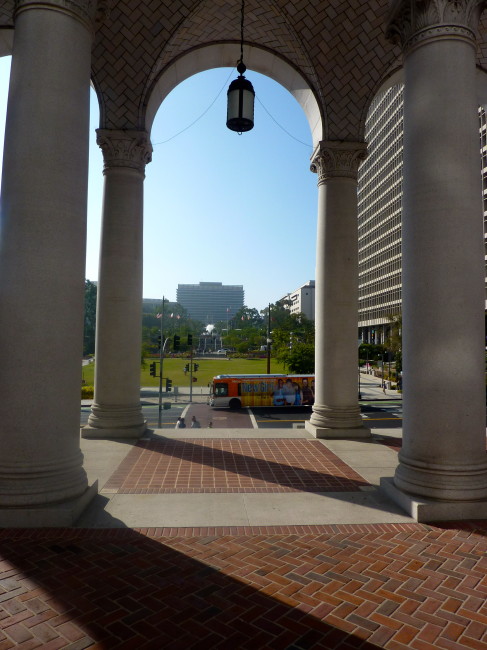 Looking back is the view to Grand Park that stretches from City Hall all the way up to the Music Center.
Looking back is the view to Grand Park that stretches from City Hall all the way up to the Music Center.
Walking around the outside of the building, the intricacy of the craftsmanship was immediately visible.
The bronze doors contain a half dozen hand-carved bas reliefs by Henry Lion that are engraved with different historic moments in the history of Los Angeles.
Before entering Los Angeles City Hall, we walked by the Frank Putnam Flint Memorial Fountain on the south lawn. He was a United States Senator in the early 20th century. Additionally, all the trees are numbered, although I’ve killed too many brain cells and have no recollection why that is. I guess I’ll have to re- find that out one of these days.
We entered from the Main Street entrance and, just like the airport (without the three-hour wait time), each person on the tour was searched and walked through a metal detector. Then, up the old elevator we rode.
 Exiting on the third floor, we were now in the Rotunda, marked by its exquisite ceilings and columns.
Exiting on the third floor, we were now in the Rotunda, marked by its exquisite ceilings and columns.
The Rotunda is decorated with Byzantine-style mosaics. The outermost circle is 135 feet in circumference, and 4,156 pieces total of 46 different varieties of marble are inlaid into the floor. In the center of the floor is a bronze depiction of the Spanish caravels that sailed into California ports between 1542 and 1800.
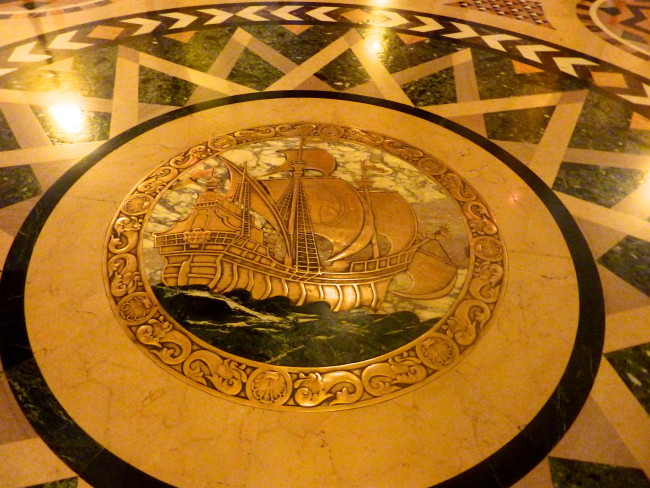
They let us spend a little time in here taking photos…
…and more photos.
Also on the third floor are gifts given to the city of Los Angeles from some of its Sister Cities. Among the gifts is a clock from Nagoya, Japan. It was given to L.A. to celebrate the 35th anniversary of its Sister City ties with Nagoya.
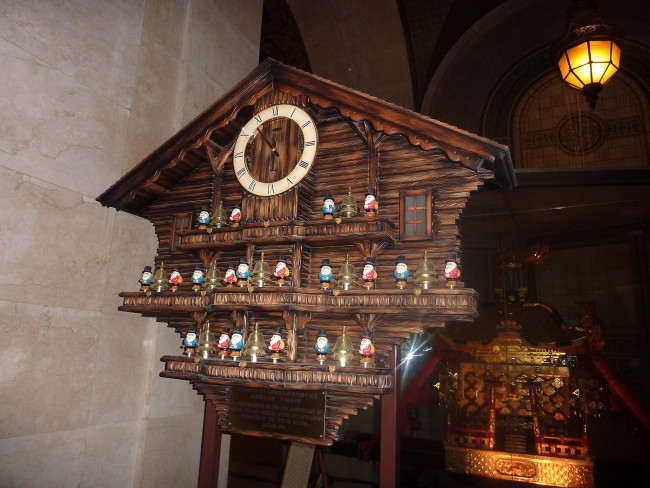
Another interesting gift is a replica Turtle Ship began which was presented to Los Angeles by Mayor Choi Jong Ho on behalf of Pusan, Korea, in 1982. I would imagine a Turtle Ship has quite a shell.
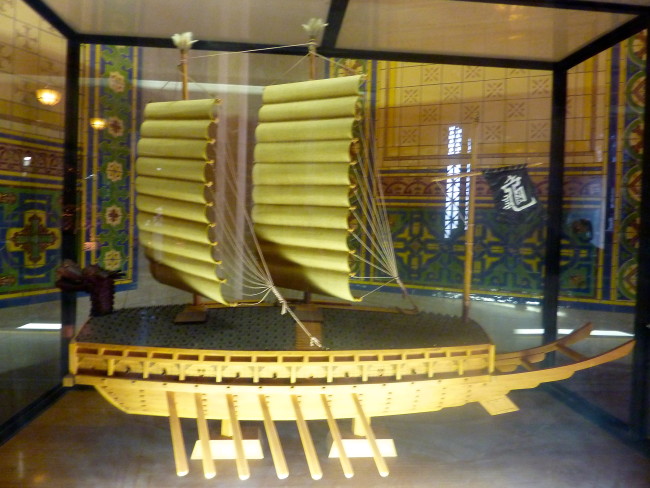 The statue of Benito Juarez was presented to Mayor Tom Bradley by Mexican president Luis Echeverria Alvarez, when the mayor was a guest in Mexico in 1974.
The statue of Benito Juarez was presented to Mayor Tom Bradley by Mexican president Luis Echeverria Alvarez, when the mayor was a guest in Mexico in 1974.
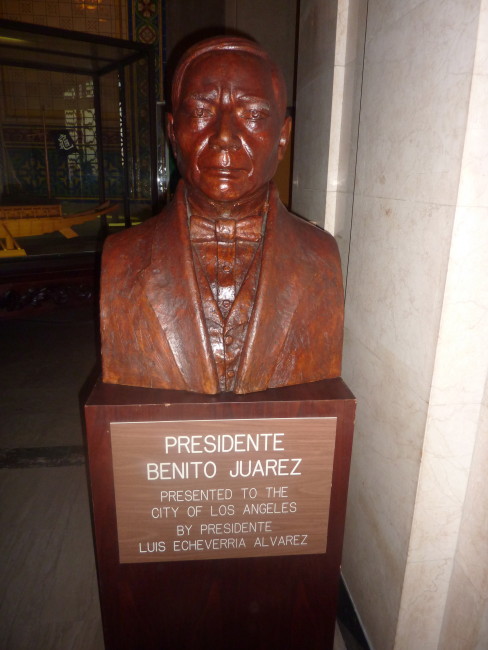 Wandering down the hallway a bit, we were shown the torch for the 1984 Los Angeles Summer Olympics plus an old street lamp that used to illuminate one of L.A.’s streets.
Wandering down the hallway a bit, we were shown the torch for the 1984 Los Angeles Summer Olympics plus an old street lamp that used to illuminate one of L.A.’s streets.
Even the Mayor’s Help Desk area is beautiful.
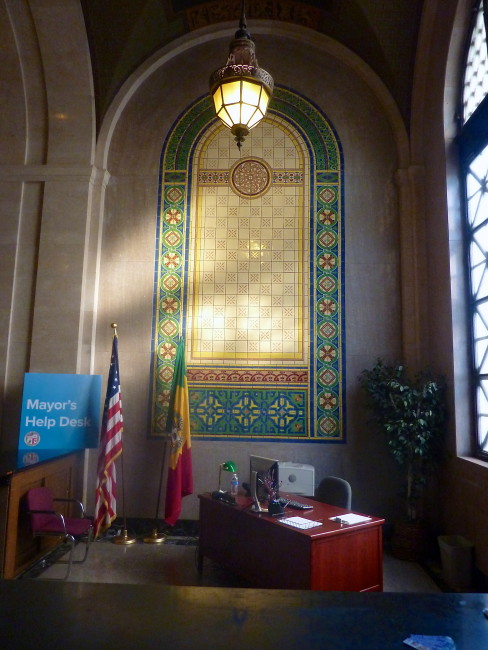 Our next room we’d visit was the John Ferraro Council Chamber. Ferraro was the longest-serving council member in the history of Los Angeles. The central, 34′ high ceiling has an original painting by Herman Sachs.
Our next room we’d visit was the John Ferraro Council Chamber. Ferraro was the longest-serving council member in the history of Los Angeles. The central, 34′ high ceiling has an original painting by Herman Sachs.
Outside the chamber, there are also Byzantine-style mosaics on each side of the hallway.
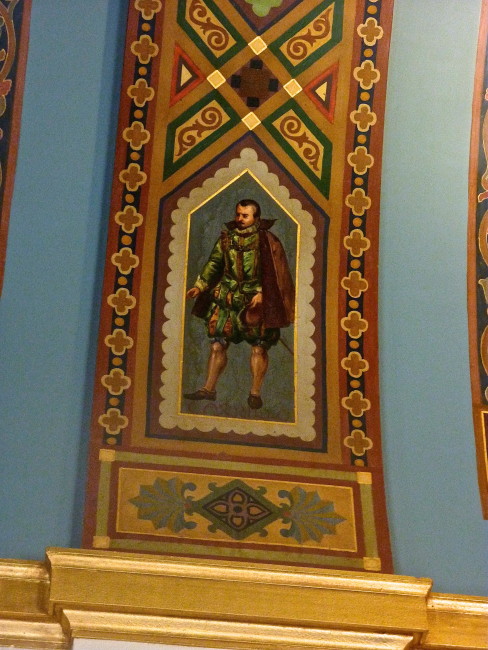 We made a quick stop into the council chambers where all the politicians yell at each other, but thankfully they were not around.
We made a quick stop into the council chambers where all the politicians yell at each other, but thankfully they were not around.
Then it was time to hit the Mayoral Portrait Gallery on the 26th floor, where all the portraits of the mayors (hence the name) are on display, including one of old “Mayor Sam” himself…Sam Yorty…one of the more colorful mayors Los Angeles has ever seen.
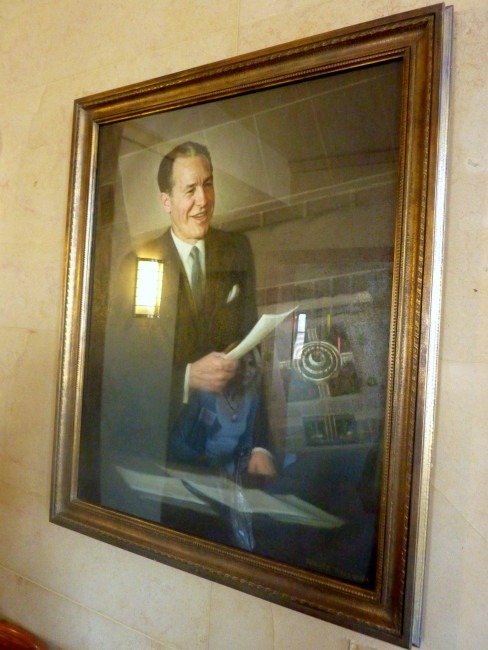 After walking up through the Tom Bradley Room…
After walking up through the Tom Bradley Room…
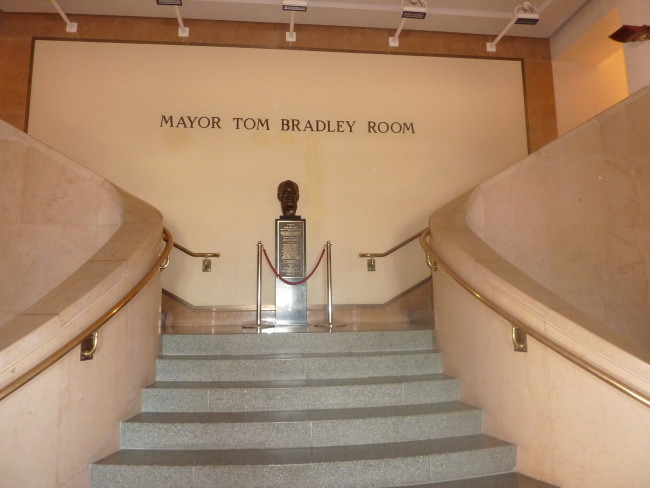 …it was time to head out onto the Observation Balcony for views over sunny (well, maybe hazy) Los Angeles. Sadly, the views out onto the city were directly into the sun.
…it was time to head out onto the Observation Balcony for views over sunny (well, maybe hazy) Los Angeles. Sadly, the views out onto the city were directly into the sun.
There is a beacon atop Los Angeles City Hall…the Lindbergh Beacon.
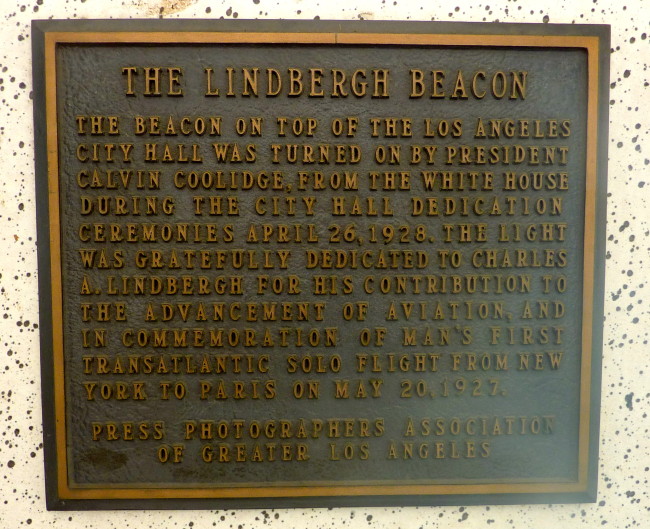 From the City Hall website: “The Lindbergh Beacon stood atop LA City Hall’s ziggurat and shot a 1,000 watt beam of light towards LAX as an aid to pilots. It was on all the time and revolved six times per minute; it could be seen for 60 miles in all directions, as far away as Pomona and Santa Monica. The Lindbergh Beacon was dedicated to Charles Lindbergh. When he flew the first solo, non-stop transatlantic flight in May 1927, Los Angeles held a parade in his honor with over a million attendees. He was showered with gifts, including a pony and a motorcycle. But what he asked for was for Los Angeles leader to make a gift toward aviation. Photographer George Watson suggested a beacon to help pilots identify the city and to make City Hall visible to pilots. Thus the Lindbergh Beacon came to be, a crown atop LA City Hall in honor of a celebrated pioneer. It was first turned on during the City Hall dedication ceremony — it was activated from the White House via a telegraph key by President Calvin Coolidge. Beneath it a revolving light blinked LA in Morse code.
From the City Hall website: “The Lindbergh Beacon stood atop LA City Hall’s ziggurat and shot a 1,000 watt beam of light towards LAX as an aid to pilots. It was on all the time and revolved six times per minute; it could be seen for 60 miles in all directions, as far away as Pomona and Santa Monica. The Lindbergh Beacon was dedicated to Charles Lindbergh. When he flew the first solo, non-stop transatlantic flight in May 1927, Los Angeles held a parade in his honor with over a million attendees. He was showered with gifts, including a pony and a motorcycle. But what he asked for was for Los Angeles leader to make a gift toward aviation. Photographer George Watson suggested a beacon to help pilots identify the city and to make City Hall visible to pilots. Thus the Lindbergh Beacon came to be, a crown atop LA City Hall in honor of a celebrated pioneer. It was first turned on during the City Hall dedication ceremony — it was activated from the White House via a telegraph key by President Calvin Coolidge. Beneath it a revolving light blinked LA in Morse code.
“However, the light was misleading. While flying toward LA, it was Lindbergh himself who misunderstood the light and expected to find a landing strip. ‘Instead, all I saw were rooftops and gas tanks.’ He had to quickly alter his course and landed in Long Beach. Complaints from other pilots piled up too and the US Department of Commerce (which then monitored air traffic) ruled that the white light had to either be dimmed or change to red. The latter prevailed, much to Mayor John Clinton Porter’s chagrin about its symbolism — “we will not have a red light atop City Hall. (below photo from internet)
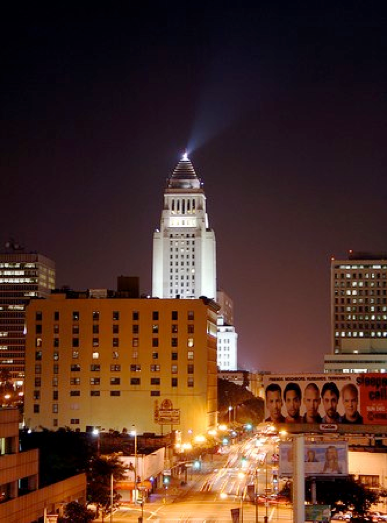
“The light is only lit during special civic occasions, subject each time to approval from the Federal Aviation Administration.”
The final thing we saw on the observation deck was a bell, which I guess was about ready to toll, because it was time for the tour to end.
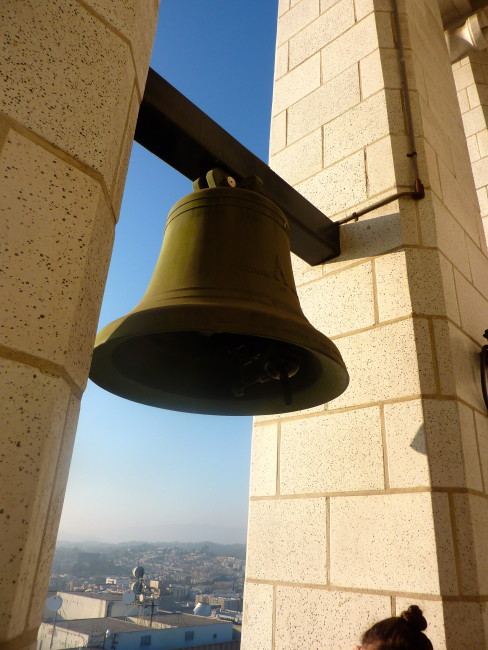 The entire walking tour of Los Angeles City Hall took about 90 minutes and cost $10. So the next time you’re in L.A., check out the Los Angeles Conservancy website and see if they have any walking tours available for this historic building. Tell them Superman (I mean Clark Kent) sent you!
The entire walking tour of Los Angeles City Hall took about 90 minutes and cost $10. So the next time you’re in L.A., check out the Los Angeles Conservancy website and see if they have any walking tours available for this historic building. Tell them Superman (I mean Clark Kent) sent you!
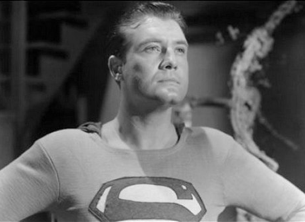
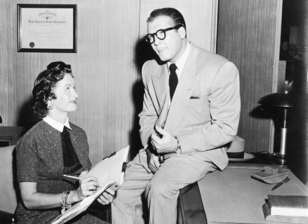
FACTS:
Los Angeles City Hall
200 North Spring Street
Los Angeles, CA 90012
Phone: 213.485.2121
Admission: Free (27th Floor Observation Deck Only)
Los Angeles Conservancy Tours
www.laconservancy.org

